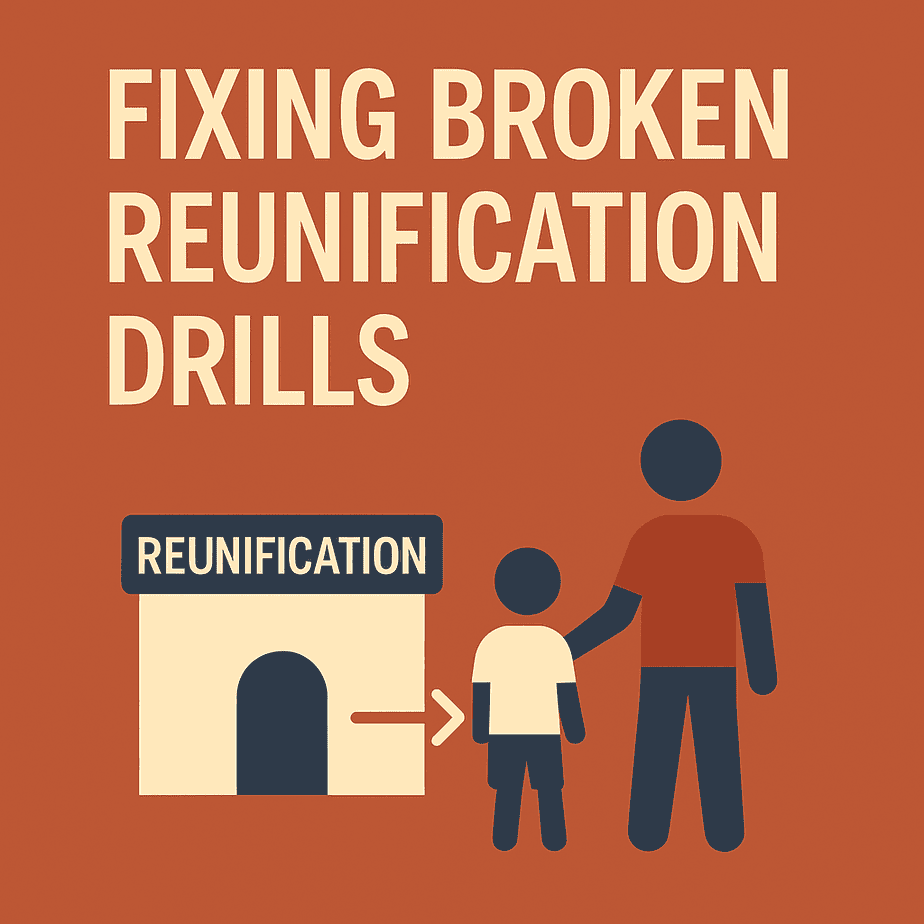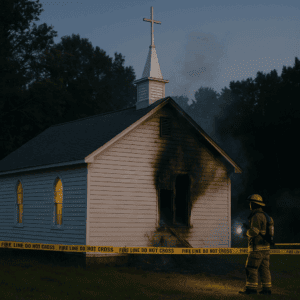Reunification Is Still the Weakest Link
Most schools have evacuation plans. Many have lockdown procedures. But very few have a working reunification process that holds up under real pressure.
In recent years, we’ve seen reunification fall apart during:
- Severe weather evacuations
- Bomb threats
- On-campus fights that spill into the parking lot
- Fire drills gone sideways
The most common failure? No one knows where to go or what to do after the students leave the building.
What We Keep Seeing Go Wrong
Here are the patterns we’ve observed during real events and audits across school campuses:
1. The Reunification Site Is Picked—but Not Prepped
Schools name a location (like “the church across the street” or “the softball field”), but they’ve never:
- Walked the route with students
- Determined where parents should go
- Created signage or pickup verification steps
2. Staff Don’t Know Their Roles
Some schools have a “reunification plan,” but it’s not drilled. Teachers don’t know:
- Who is greeting parents
- Who is checking ID
- Who is radioing for students
- Who is documenting releases
And in many cases, staff are so used to fire drills that they just leave once they’re outside.
3. The Plan Doesn’t Account for Chaos
Real emergencies involve:
- Traffic jams
- Angry or panicked parents
- Students separated from groups
- Media presence or social media rumors
If your plan hasn’t walked through those realities, it won’t hold up.
What a Functional Reunification Plan Includes
A usable reunification drill or plan needs five things:
| Component | Description |
|---|---|
| Location | Safe, accessible, and reviewed annually with law enforcement |
| Roles | Specific assignments for greeters, security, verification, logistics, runners |
| Signage | Specific assignments for greeters, security, verification, logistics, and runners |
| Supplies | Printed or ready-to-print directional signs (e.g., “Check-In Here,” “Parent ID Required”) |
| Documentation | A way to track who picked up each student and when |
Want to stay aligned with national best practices?
This approach is consistent with the Standard Reunification Method (SRM) developed by The “I Love U Guys” Foundation, a widely adopted framework for safe and accountable student-parent reunification.
You can learn more about their model and access free resources at iloveuguys.org.
How to Fix It
1. Add a Reunification Go-Kit to Your Emergency Binder
Include:
- Pre-made signage
- Rosters
- Contact sheets
- Scripts for intercom or parent calls
- Role chart (with backups)
Related resource:
Emergency Drill Documentation Bundle for Schools
2. Run a Tabletop Walkthrough
Get your admin, security, and front office staff together. Talk through a real scenario:
“There’s been a gas leak. We’ve evacuated to the church parking lot. Parents are arriving. What do we do first?”
Assign roles out loud. Walk through the confusion. Write down gaps.
3. Add a Reunification Drill to Your Calendar
You don’t need to move the whole student body. Start small. Run it with just staff or one grade level. Practice check-in. Make mistakes now—before it counts.
Want a real script for running it?
We include a sample inside our Specialized Drills Guide for Schools
Final Thought
You don’t need a perfect plan. But you do need one that’s practiced.
Reunification is messy. But the schools that run through it, even once, are already ahead of most.
If your safety plan has 20 pages but your front office still panics when a parent shows up unannounced… it’s time to fix that.
Download the Emergency Drill Documentation Bundle
Simple templates. Built for real use, not just compliance.






